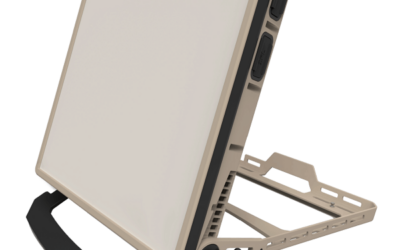Evolving Configurations Continue to Insert Capability
Reporting for MON from Huntsville, AL in advance of the opening of the Space and Missile Defense Symposium 2019 (SMD), 6-8 August, Marty Kauchak provides insights on Raytheon’s Expanding AN/SPY-6 enterprise.
Raytheon is on contract with the US Navy (USN) to deliver seven ship-sets of the AN/SPY-6(V)1 radar, with the company expecting to be awarded a follow-on contract for two additional ship-sets of this variant later this year. The initial contract calls for the company to deliver hardware for the first (V)1-configured ship, USS JACK H LUCAS (DDG 125), a Flight III DDG-51-class vessel, not later than April 2020. “We have accelerated a lot of things […] We have started to deliver the below-deck equipment associated with the power system and we’re on track to deliver the cooling equipment by [the] end of summer,” commented the company’s AN/SPY-6 Programme Director, Mike Mills.
Evolution of the baseline SPY-6 technology has yielded the development of two follow-on systems, the SPY-6(V)2 Rotator Radar and the SPY-6(V)3 Fixed Face Radar. These configurations, built for surface warships, are elements of the Raytheon Enterprise Air Surveillance Radar (EASR) project. The EASR system is an array of radar devices on a 36 sq ft platform that can be quickly mounted on a vessel. While the ballistic missile defence (BMD) mission capability of the V1 variant has been removed from these two follow-on family systems, these newest sensors will still serve as the Navy’s capable, next-generation radar on aircraft carriers and amphibious vessels, providing simultaneous anti-air and anti-surface warfare, electronic protection and air traffic control.
This July, the Navy awarded Raytheon a contract to procure long-lead materiel for the two newest SPY-6 configurations.
Mr Mills delivered an industry perspective on the value propositions the AN/SPY-6 provides to the USN and prospective maritime customers. At the overarching level is “its unmatched, simultaneous defence against multiple different threats, cruise missiles, surface ships and aircraft, and you have the ‘big ones’ – ballistic missiles and electronic protection – EAP as it is also known.”
Beyond defending against these major threats, the radar offers other technological advances. “It really comes down to the amount of sensitivity this radar has – from an Air and Missile Defense Radar (AMDR) perspective – 100 times more sensitivity than the existing AN/SPY-1 [in DDG-51 Flight III configuration]. Even if you look at it from a back-fit perspective for 24 RMAs [Radar Modular Assemblies or individual ‘building blocks’], it is 30 times more sensitive than the SPY-1,” Mr Mills observed, explaining further “This means we’re able to detect threats quicker, identify what they are and counter-act them as it has never been done [before].”
Gallium Nitride-based (GaN) components, found in other Raytheon weapons systems, feature in the SPY-6, helping to bolster the radar’s range and other capabilities. Operational security concerns meant Mr Mills was unable to provide detection ranges and other operational details of this radar family.
Of added significance, the Navy and prime contractor Raytheon are solidifying enhancements for this programme, even though the first SPY-6 has not yet been installed on DDG 125. “We’re looking at technical insertions to not only make the system perform better, as well as technical insertions to drive costs down for the Navy,” Mr Mills revealed. While specific upgrades could not be discussed, as they are not part of engineering change proposals or other formal programme actions, they generally include improvements through the system life-cycle – ranging from obtaining cost reductions for specific parts to achieving training efficiencies.
The company’s programme leader further reported Raytheon has had “a lot of conversations ongoing with international customers. We definitely see there is a lot of strong interest with these navies. We are walking them through the radar’s capabilities, what the different variants do and what it brings to them.” Most of the prospective customers’ attention is focused on configurations smaller than SPY-6(V)1 – EASR and even the back-fit of 24 RMAs. “That is the ‘sweet spot’ of this building block approach, in which each RMA is a self-contained radar in a 2x2x2 ft box. You can build these in a different configuration to meet any customer’s need,” he pointed out. At the time of writing, Raytheon stated it had received multiple requests for AN/SPY-6 capability discussions with international customers.
Approximately 70% of the AN/SPY-6 radar system is outsourced to an extensive supply chain, with the remaining 30% of the content being furnished in-house at Raytheon. Major suppliers to Raytheon for this programme include General Dynamics, Northrop Grumman, Anaren and Major Tool & Machine. While no non-US companies are part of the current AN/SPY-6 enterprise, “this is something we are looking at, especially as we get closer to the first international sale,” Mr Mills concluded.
Marty Kauchak

























